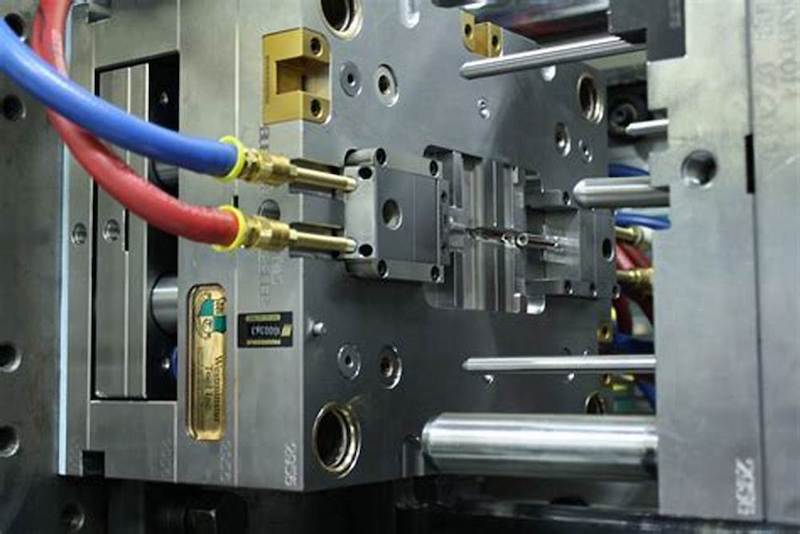An Study of Polymer Injection Forming: Materials and Techniques
Plastic injected shaping represents a crucial manufacturing process that has certainly transformed the production of plastic parts and materials throughout multiple industries. From automotive to consumer goods, the flexibility and efficiency of this technique allow the production of complex designs with elevated precision. With the pressure on businesses attempting to optimize output and reduce costs, grasping the science behind plastic injection molding is essential for those keen in utilizing this service.
At its heart, plastic injecting shaping entails melting polymer materials and forcing them into a mold to form desired contours. This technique facilitates for the rapid manufacturing of high-quality products in large volumes, making it an attractive option for businesses seeking to expand their activities. By exploring the varieties of materials used and the techniques employed in this procedure, we can get insights into how plastic injecting molding solutions can meet the demands of contemporary manufacturing while maintaining environmental responsibility and innovation.
Comprehending Polymer Materials
Plastic materials are the basis of plastic injection molding service s, as they serve a essential role in defining the end goods' characteristics and capabilities. A variety of types of plastics, including thermoplastics and thermoset plastics, are used in molding processes. Thermoplastic materials can be reheated and reshaped multiple times, making them flexible and perfect for a variety of uses. Common instances include polyethylene and PP, which are favored for their durability and lightweight characteristics.
The choice of substance is determined by the intended use of the molded component. For example, high-performance plastics like PC and polyamide provide superior strength and heat resistance, suitable for automotive and aviation uses. In comparison, performance plastics offer additional benefits, such as chemical resistance and dimensional stability, making them ideal for complex designs and stressful environments. Understanding the properties and behaviors of these materials is crucial for selecting the appropriate one for a particular project.
In addition to substance type, additives can be added to enhance particular qualities, such as color, pliability, or UV resistance. The injection molding service must carefully consider these elements during the design and manufacturing phase to ensure that the final product meets the required specifications. As developments in materials science progress, the selection of choices available for injection molding expands, offering new solutions for multiple industries.
Injection Molding Process Summary
The molding process begins with the processing of raw plastic materials, typically in the form of pellets. These pellets are fed into a heated barrel where they are melted down. The heat is monitored to make sure the plastic reaches the right viscosity for molding. Once the material is fully melted, it is injected into a mold cavity under high pressure. This step is essential as it guarantees that the substance fills the whole mold and captures all the intricate features of the design.
After the molten plastic is injected into the mold, the solidifying process starts. The mold is kept at a precise temperature to allow the material to solidify and assume the form of the mold. Cooling time varies based on the size and complexity of the component being manufactured. Once the material has cooled and hardened sufficiently, the mold opens, and the completed part can be ejected. This part is then inspected for standards, making sure it meets the required criteria before proceeding to the subsequent step.
Finally, any necessary secondary operations are carried out on the shaped part, such as trimming, assembly, or finishing. The effectiveness of the injection moulding procedure allows for high-volume production while maintaining consistency in quality. With improvements in technology, modern injection molding technologies can handle a wide range of substances and intricate shapes, making it a popular option across multiple sectors.
Applications and Gains of Injection Molding

The injection molding process is broadly used across various industries due to its versatility and productivity in manufacturing complex shapes. It plays a crucial role in the manufacturing of automotive parts, where precision and durability are critical. From dashboards to detailed electrical housings, the ability to create easy-to-handle yet strong parts makes injection molding a popular choice in the automotive sector.
Additionally significant use of the plastic injection molding process is in the consumer products industry. Common products such as children’s toys, kitchenware, and self-care products are commonly produced using this approach. The technique allows for mass production, making it financially efficient while ensuring uniform quality in each item produced. Additionally, the versatility in choosing materials enables manufacturers to address specific market needs, ranging from resilience to visual appeal.
The benefits of this technique also reach to environmental considerations. Modern advances in technology have made it possible to use reuse materials in the fabrication process, lessening waste and supporting environmentally friendly practices. Furthermore, the eco-efficiency of these machines contributes to lower production costs and a reduced carbon footprint, making it a ethical option for manufacturers seeking to align profitability with sustainability.